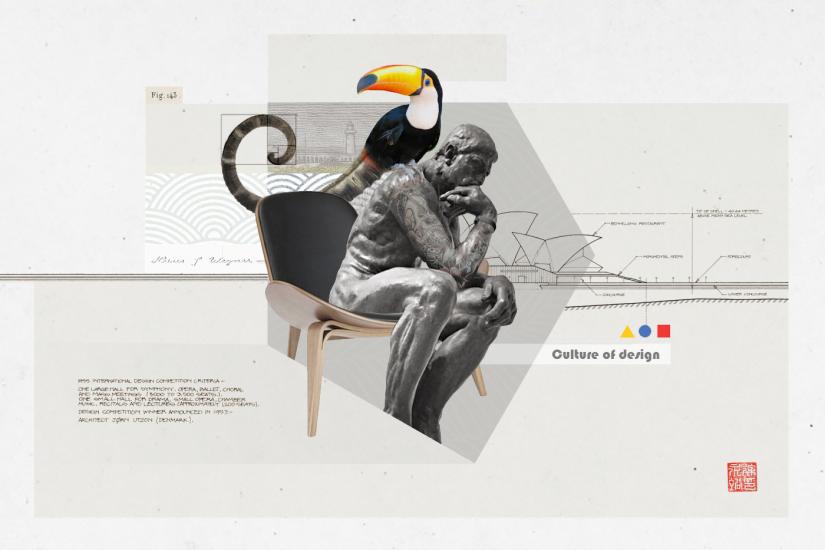How culture influences design

Digital collage by: Calan Stanley
There's no doubt about it - culture influences design. You can't deny where someone lives, the history of the place and the culture is going to have an impact on the style and aesthetics they are drawn to and play with.
Denmark
Danish design is known for being totally functional but still edgy and modern and leads the field of architecture and furniture. It is said that Danish designers are influenced by the German Bauhaus school of modern design as well as new industrial technologies. As a result the pieces are often simple and functional but also have a distinct sense of style and innovation. It's all about using good materials, attention to detail and focusing on the user of the product.
Some significant designers from Denmark include Hans J. Wenger who specialises in functional chairs that are used around the country. Arne Jacobsen also works in the fields of design, architecture and furniture - her The Egg and The Swan chairs are highly sought after.
In fact, the Sydney Opera House is a great example of Danish design. Jorn Utzon was the designer of the building, and created a space that is perfect for performances and events and is also simply an architectural wonder, and an iconic part of Sydney. In fact on June 28 2007, it became a UNESCO World Heritage Site and was identified as one of the most distinctive buildings in the world, not just in this country.
Latin America
Latin America encompasses 19 countries, including Chile, Brazil and Argentina, has a culture known for its pride, hard work and playful joyousness. The region definitely has its distinctive sense of style when it comes to graphic design. While there is going to be significant diversity with such an expansive area of the world, there is also a distinctive sense of shared histories and trajectories.
Often the pieces are strong, with a masculine aesthetic, and bold, bright and colourful. The artistry is acutely geometric and innovative - these designers aren't afraid to push the boundaries and try something completely out of the box. The streets are packed with colour and this definitely comes through in the works of art from these countries.
It can be described as dramatic and wild, with local materials used as well as a vibrant chromatic palette. This is also a world of design that is continuing to develop and define itself.
Japan
From packaging, to interior design and decor, to paintings and lighting, Japanese design is recognisable and has many defining characteristics. Japanese design is known for the way the artists use materials and combine tradition and the modern way of life in unique and interesting ways.
Many aspects of traditional Japan, such as the rituals and culture from ancient eras, has filtered down into design. Kimonos, for instance, were first worn in the Heian period, between 794-1192. These garments went from practical clothing items to culturally significant and timeless aspects of Japanese society. The colours of the kimono could represent seasons, political class, leaders and military prowess. It also became an art form, with colours and patterns carefully crafted. Today, the traditional kimono exists and is worn at weddings, funerals, tea ceremonies and special events, but is also frequently seen in a less structured, more wearable and playful form in the world of modern fashion.
You can see similar occurrences throughout Japanese design. Cute cartoon drawings and colourful pastel creations are displayed on maps of ancient gardens, utterly modern and futuristic buildings hold works of art that are hundreds of years old, and bento boxes are created with both the ancient art of sushi making and playful depictions of popular kids' shows.
Print Together - online fast printing service in Melbourne and whole Australia